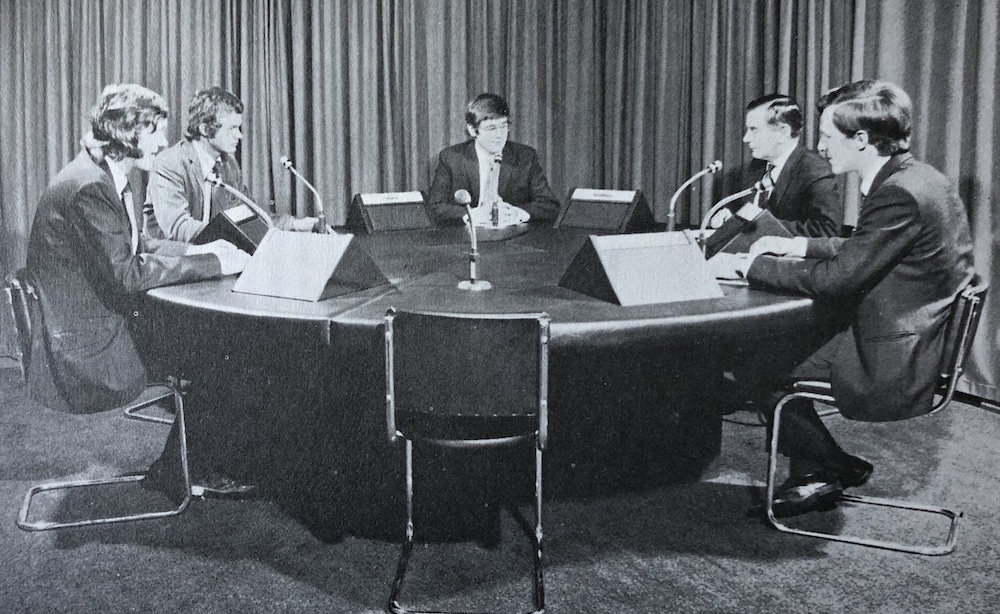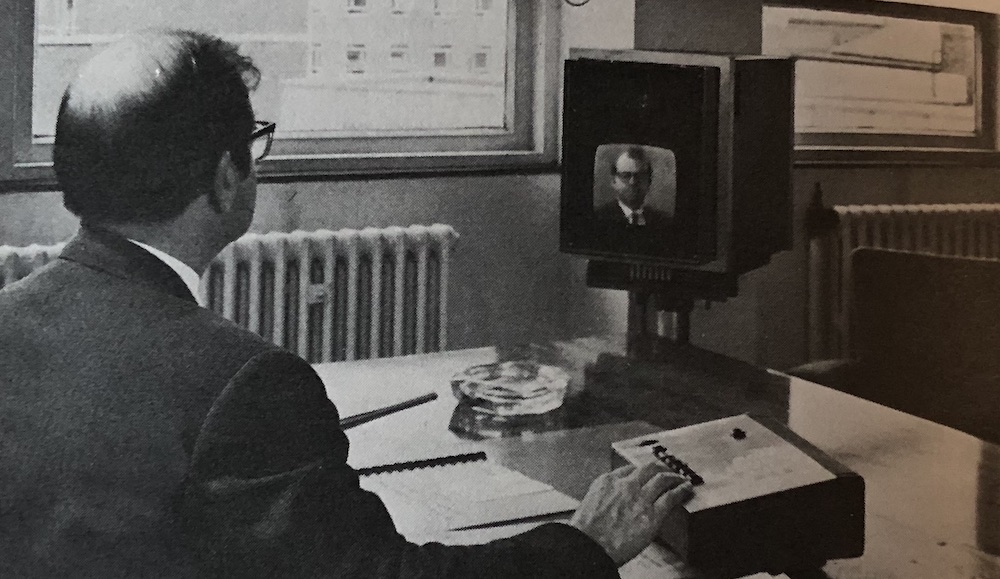Social Presence Theory
By @alexcornell // 02.14.19
Last year, a very deep rabbit hole led me to a book from 1976 called The Social Psychology of Telecommunications. I found it by way of Social Presence Theory, a concept frequently referenced in contemporary writing on presence and communication. I was interested in reading about how psychologists, far removed from the 21th century, considered the effects of presence on remote human interactions.

Why, considering its pervasiveness, has telecommunications been so long neglected as a proper subject for study by social scientists? There has been very little informed speculation about the effect of the use of telecommunication, let alone systematic empirical investigation. (Short 1976)
It seems obvious now, but back then, the concept that mediums could differ in communicative richness was just being explored. Is talking on the telephone meaningfully different than talking face-to-face? What is different about it? What about the experimental Viewphone? In this extremely fascinating book, the authors grapple with the differences between various mediums of communication, and put forth a theory to explain those differences: Social Presence.
We have been concerned with how well different communication media can handle the range of person-to-person interactions. We have examined evidence, taken largely from the laboratory, where the effects of medium on task performance, satisfaction, and the perceptions of the other person, have been studied under controlled conditions. We have hypothesized that the effects we have observed can be related to a variable we call the Social Presence of the communications medium. (Short 1976)

What is Social Presence? In this book, Short, Williams and Christie define it as a synthesis of variables, a continuum that measures the degree of awareness people have of each other during communication. A face-to-face interaction would have the most social presence, whereas a crappy walkie-talkie exchange, likely has some of the least.
Basically, the more social presence afforded by the medium, the more salient the interaction will be. Other writers have defined is as such:
- Individual perceptions of mediated others, that fluctuates during interactions.
- A continuum where a focus on interpersonal emotional connection between communicators is on one end and a focus on if someone is perceived as being ‘present’, ‘there’ or ‘real’ at the other end. (Lowenthal 2010)
- The degree of salience of the other person in the interaction and the consequent salience of the inter-personal relationship.

Importantly, how much Social Presence a medium provides doesn’t imply that it’s more effective or better. It’s more about matching the right medium with the given task. People are aware of how much social presence each medium has, and will adjust the method of communication accordingly. For example, eye contact can have a big impact on the outcome of an interaction:
Eye-contact is considered to be important in communicating friendship, attraction, aggression, and attentiveness. With such a wide range of functions, all of which have been demonstrated in experiments dealing with the face-to-face situation, one would expect that media which remove or disrupt eye-contact would seriously affect the progress and the outcome of the interaction.
This is relatively obvious, but it’s interesting to consider how no such signal is provided by many communication tools today. There is no concept of simple eye contact in text messaging or real-time shared experiences that don’t involve video. Should there be an interface equivalent of eye contact? What would such a basic “I see you” expression it look like?
Now just in case I’ve lost you in psychology mumbo jumbo, please enjoy this passage about the “coffee and biscuits problem”, which the authors were very concerned with:
The Coffee and Biscuits Problem: One of the problems associated with telecommunications is that there is a very obvious barrier between the two parties communicating, no matter how transparent that barrier may be. It will never be possible, no matter how sophisticated the system, to offer the other chap a cup of tea or a biscuit. So a whole new etiquette has to be developed. Is it polite to drink coffee when the other person has none? Should the two parties make sure before they hold the meeting that they agree on whether they are going to have refreshments or not?
There are a number of amazing passages like that, which in 50 year hindsight, are a really fun read. We take so much of this for granted now, and it’s really fun to learn about people thinking about it for the first time.
Another fascinating study (Argyle and Dean 1965) proposed that when two people are seated face-to-face, they will adjust their seating positions until and equilibrium is reached. An equilibrium of what? The suggestion was that they are searching for the correct level of intimacy. Factors like eye-contact, smiling, distance. By comparison, immediacy is more of a psychological distance (as opposed to physical). This often manifests itself in speech (the use of different pronouns etc), but also other cues, all of which are affected by the medium. Both intimacy and immediacy are heavy factors in social presence.
Fascinating! Anyway. This was the main thing I was hoping to find:
Before considering the more subtle effects of medium on complex interactions, it is appropriate to consider the simplest way in which an individual can impact on another: the mere presence of others has been shown to affect performance on a variety of tasks.
In this passage, the authors are referencing a series of studies where individuals’ performance on certain tasks are impacted by the presence of of other people, or even the subtle knowledge that other people are aware of what they are doing. The referenced studies measured the impact of presence on performance and output. The authors also extrapolated these learnings and applied them to communication performance, and how this varied between different mediums. For example, it is much easier to reach an agreement in person, as opposed to over the telephone, given how many more social signals are available for consideration.

In our work, we aren’t concerned with task performance, but are more interested in collective excitement and crowd dynamics, which this theory doesn’t directly consider. But I do think we can extrapolate that the mere presence of others – the simple awareness of others – can be transformative to remote interactions.
My hope was to glean some undiluted insights about presence, some little kernel I might be able to apply to my work today. While I didn’t find anything groundbreaking – much of what I read, is generally understood to be true today – it did reenforce how fundamental and important presence is; how deeply it can affect the outcome of remote interactions, and how impactful even the smallest expressions of it can be.